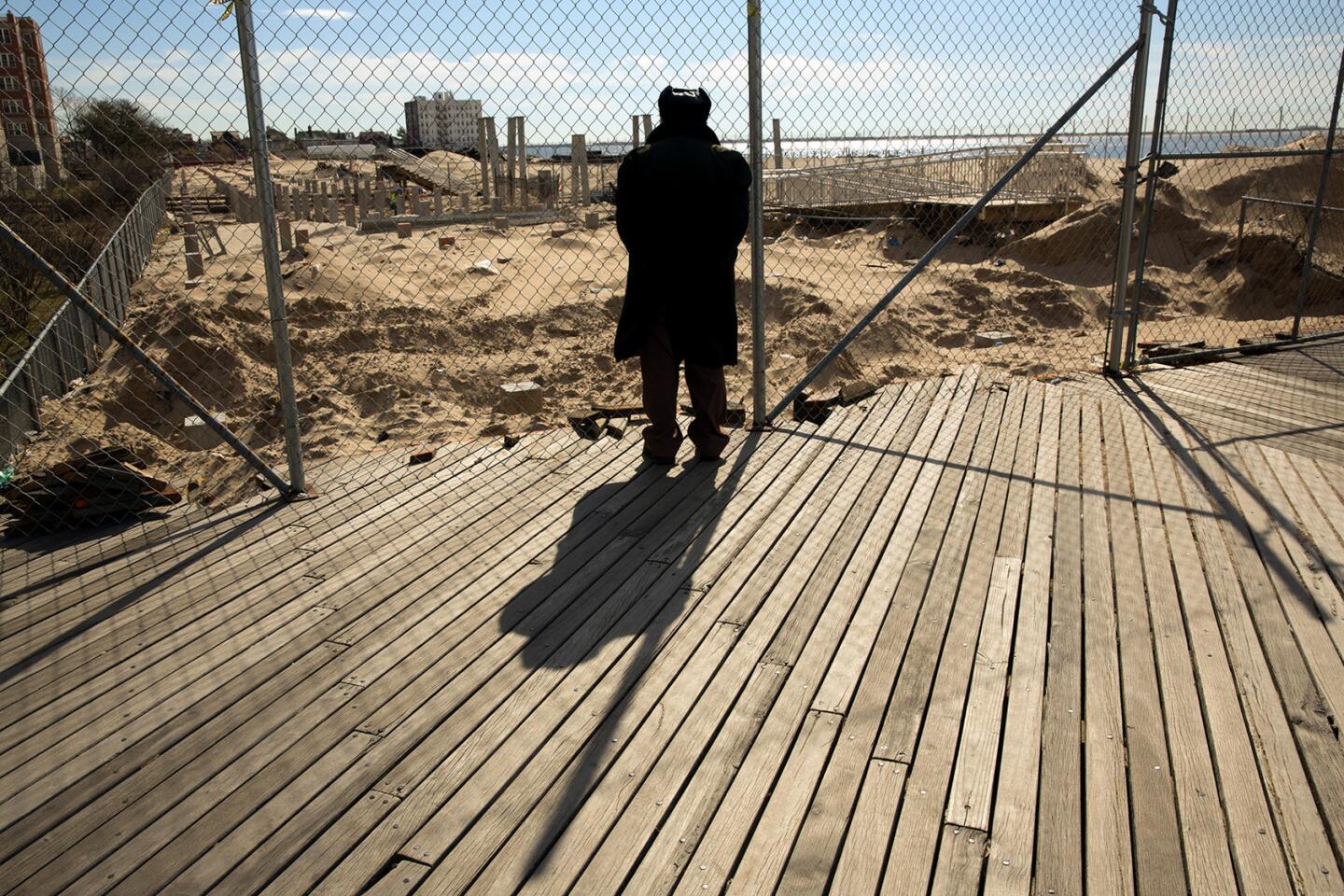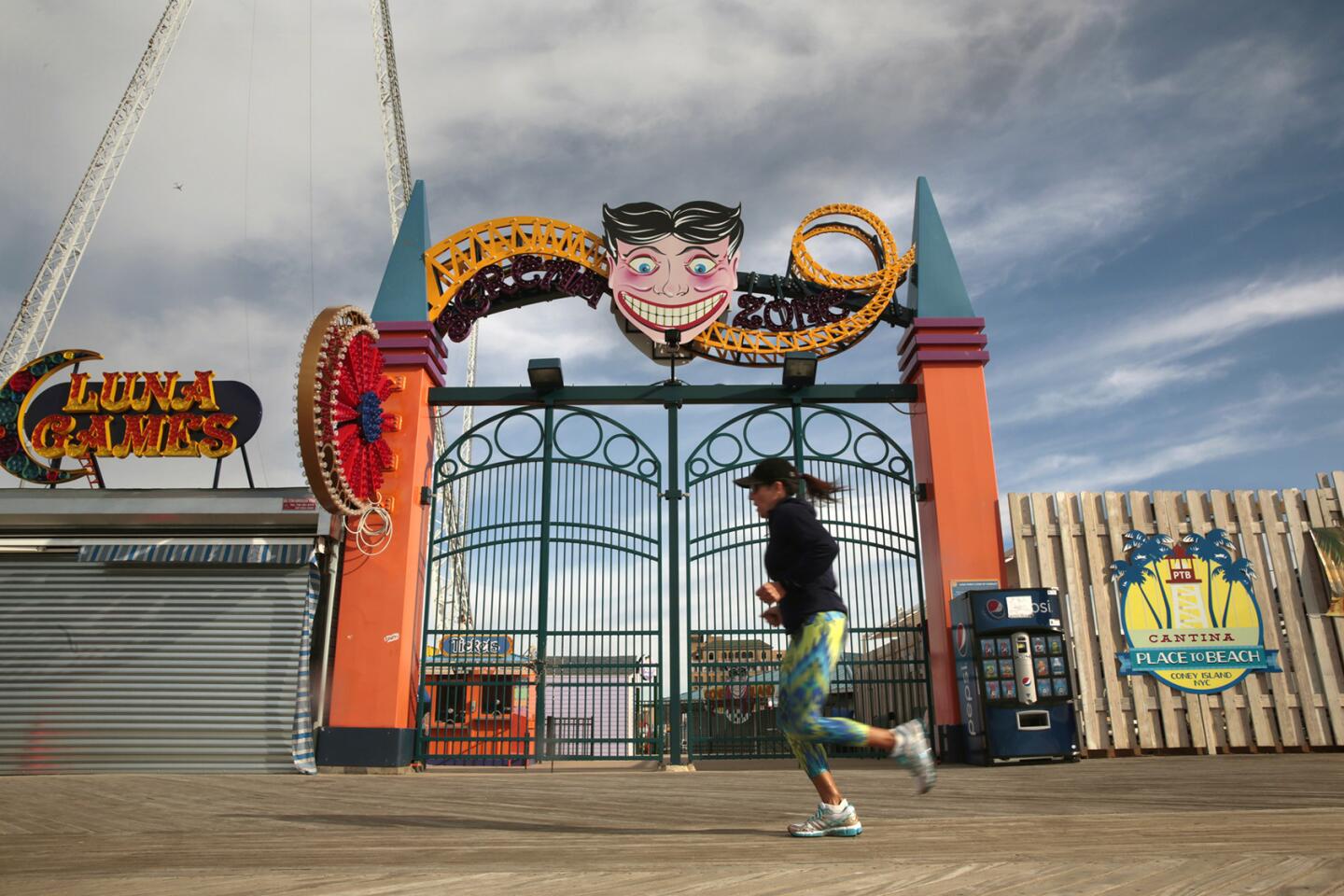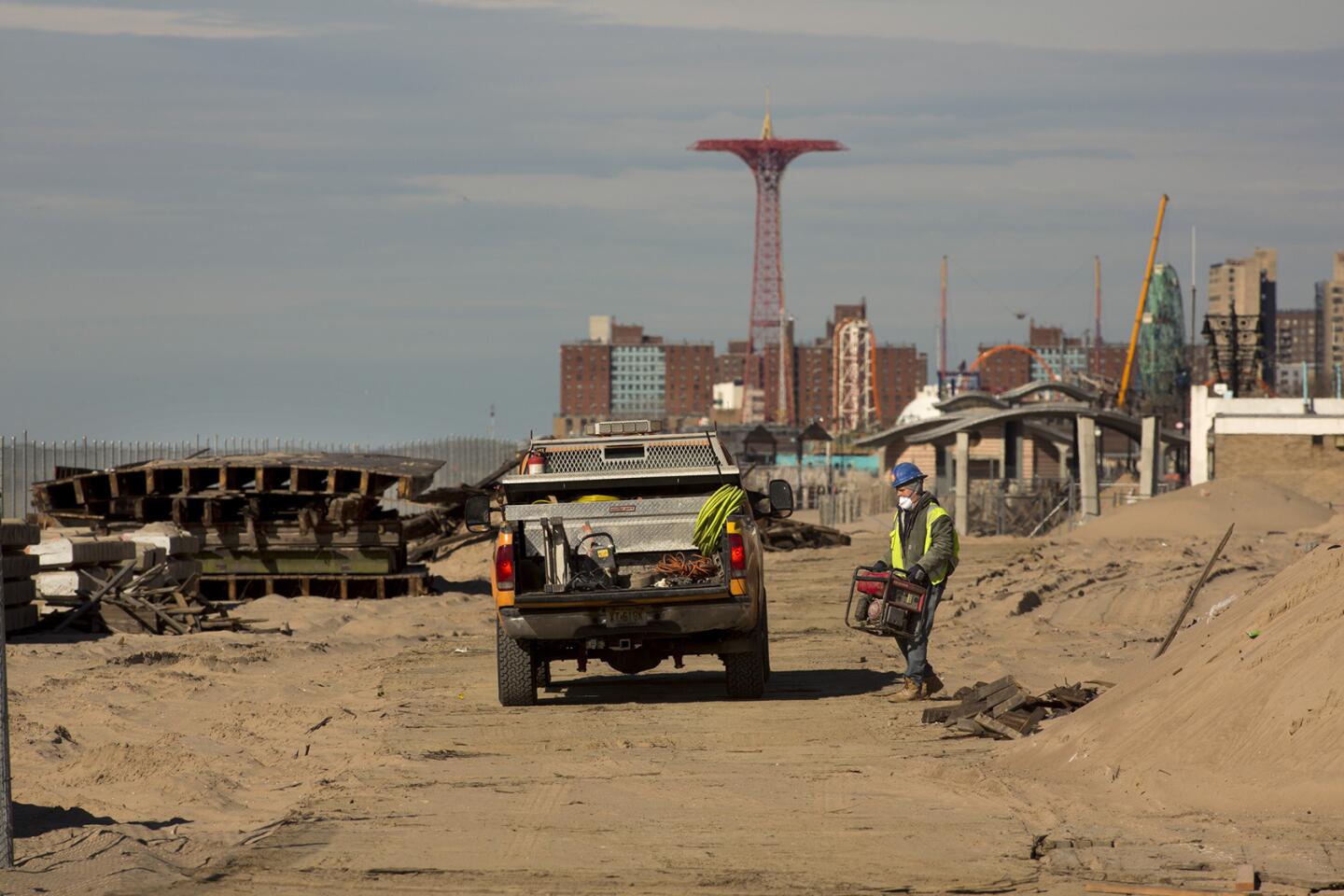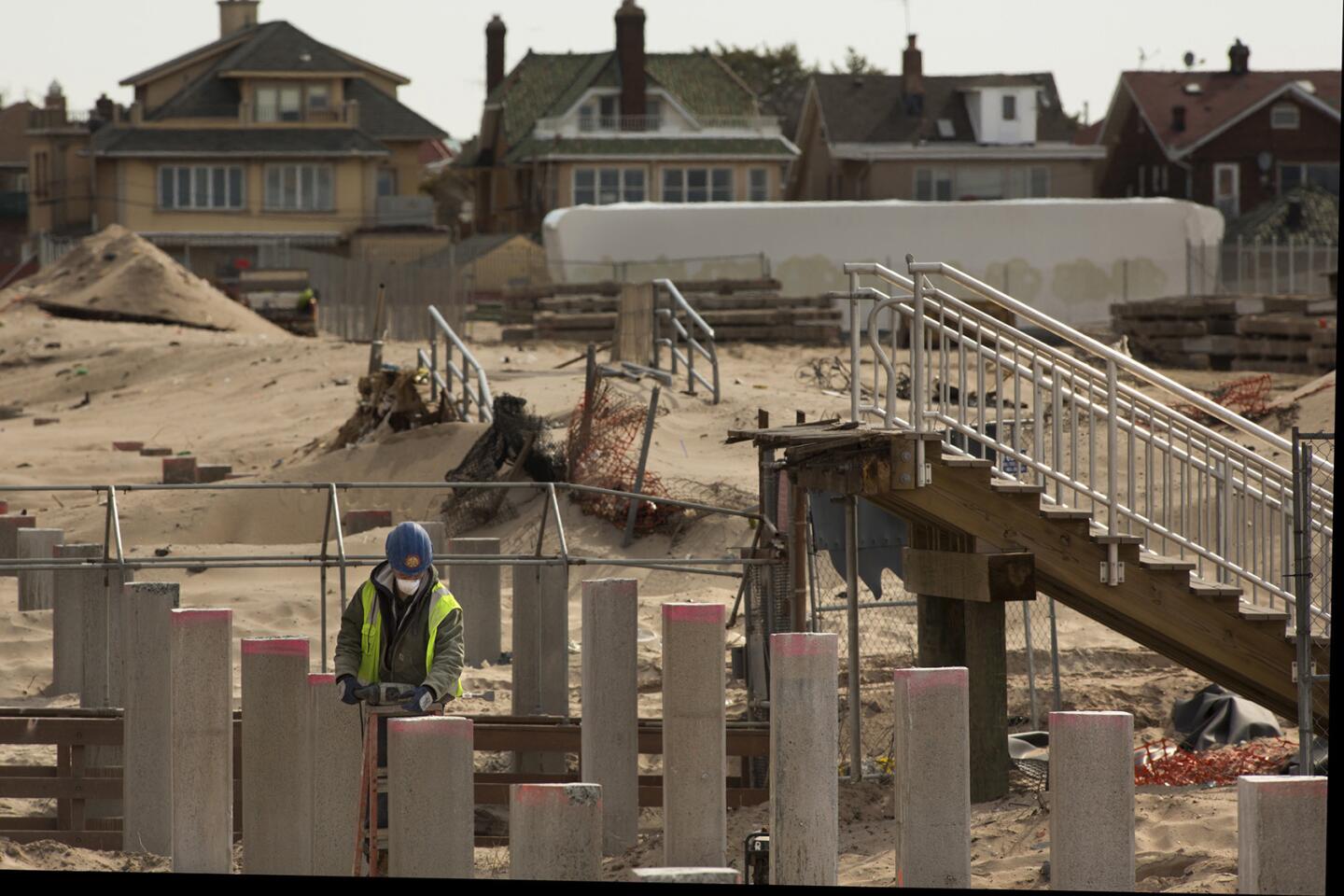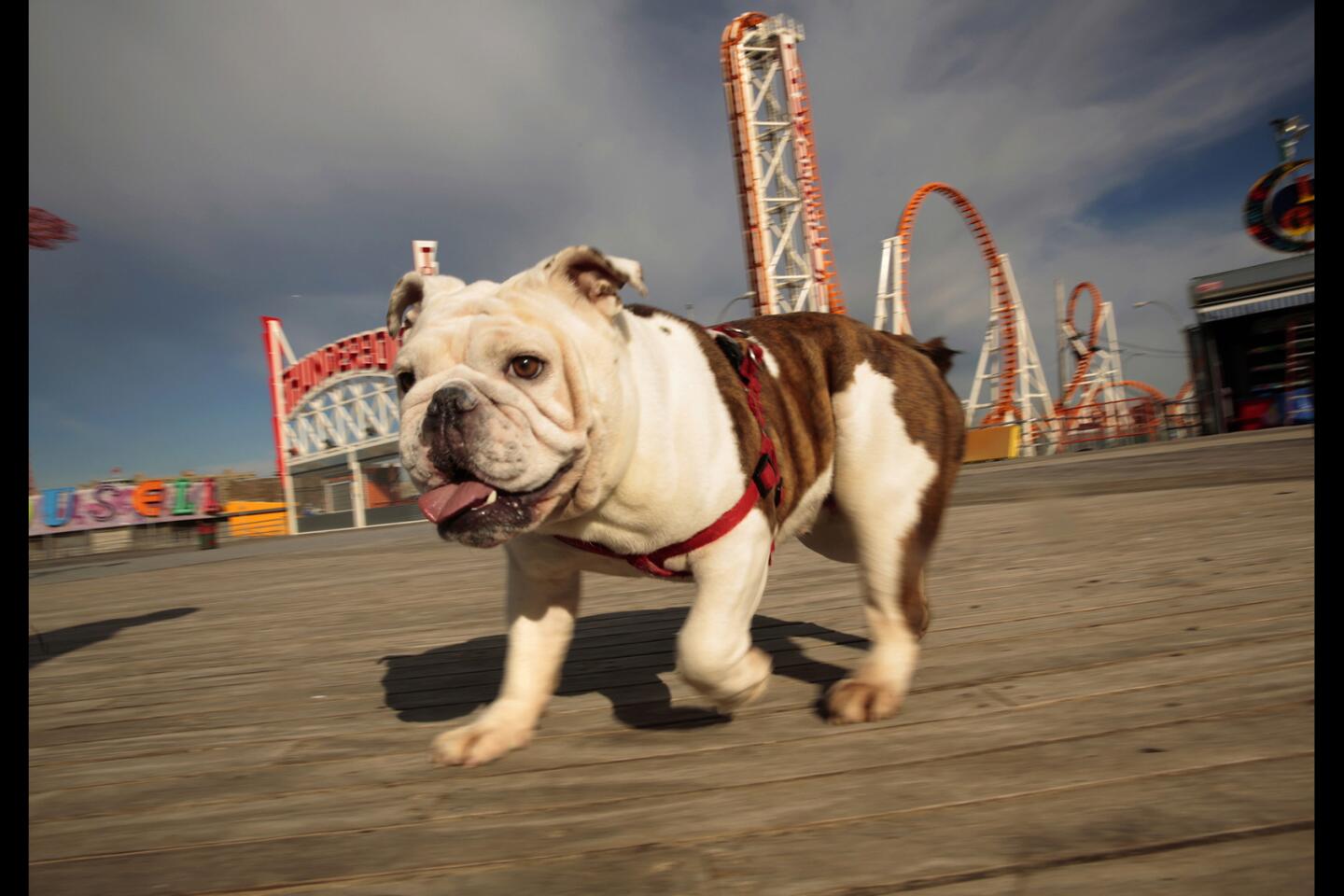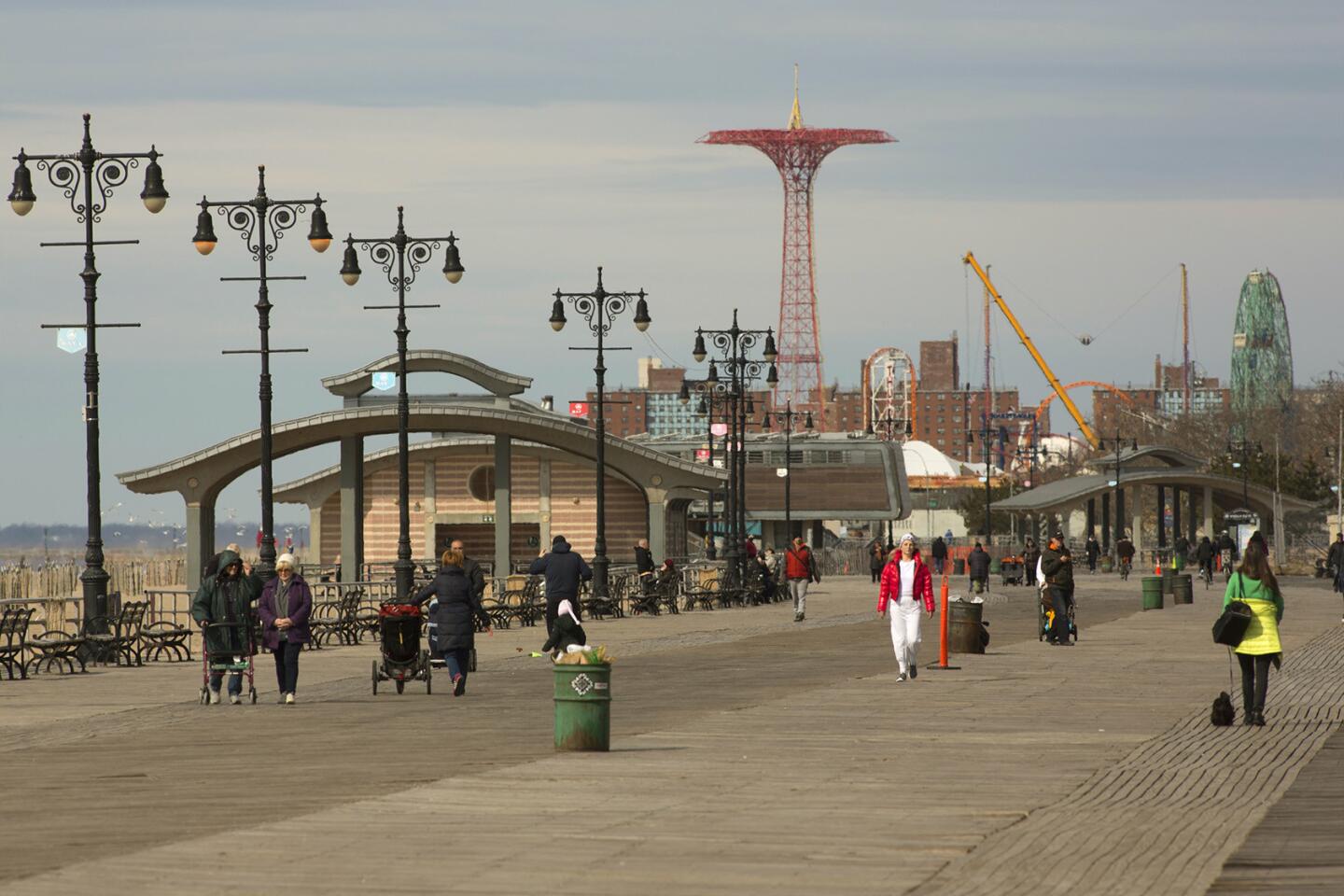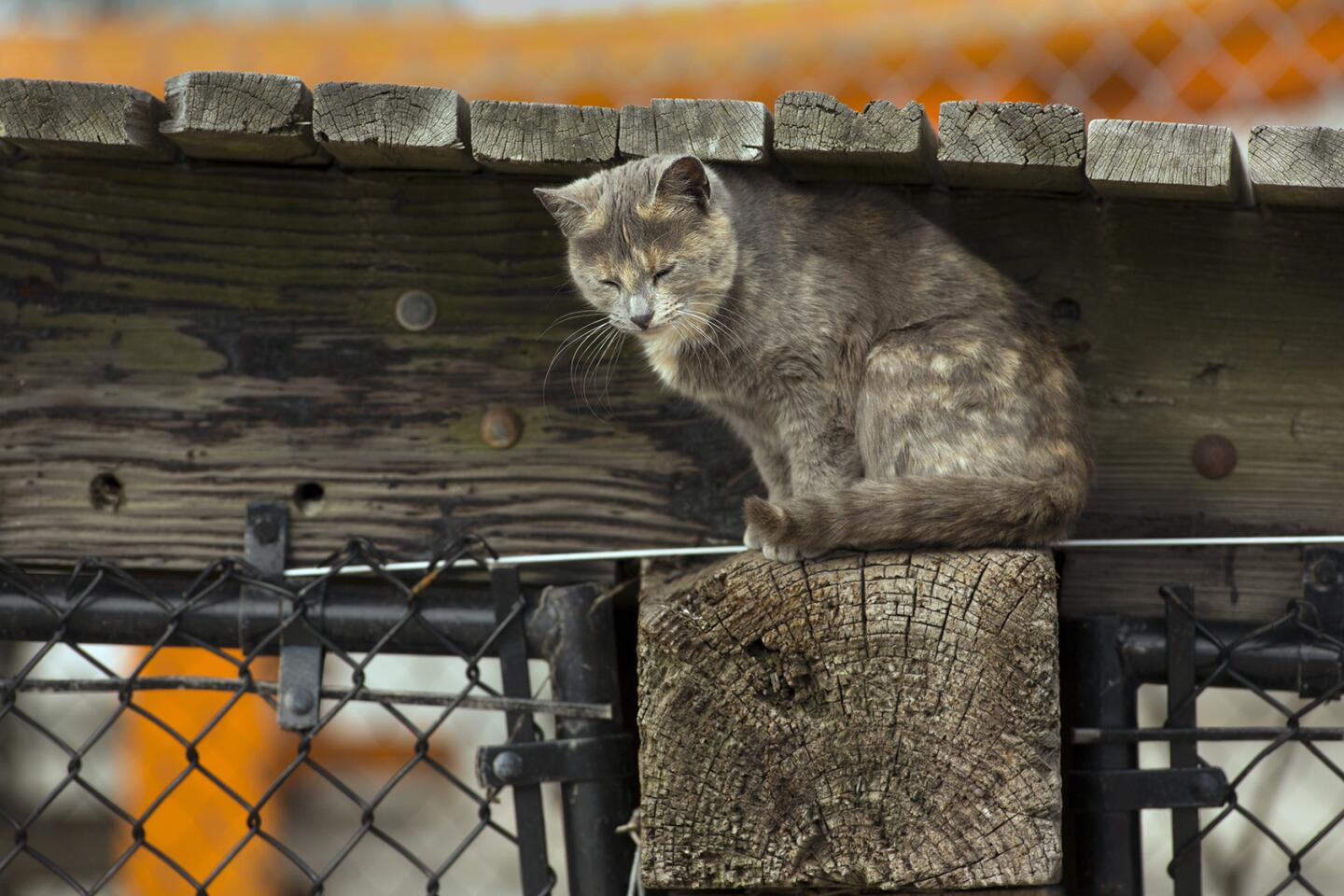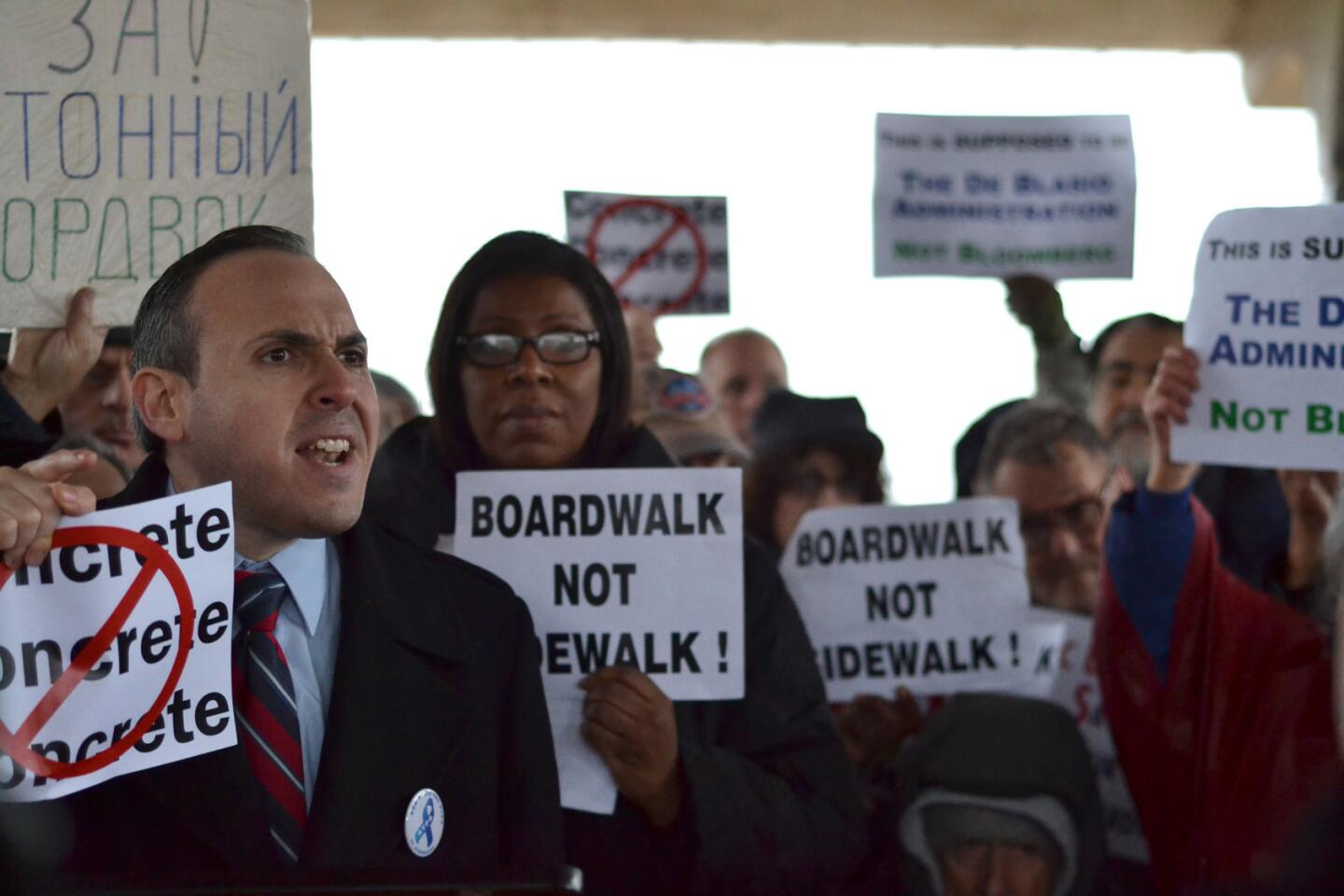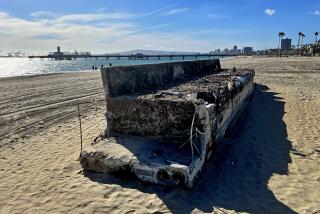Concrete? Coney Island fans say only wood will do for their beloved boardwalk
On a rainy weekend in January, the Coney Island boardwalk was not the boardwalk of memory: no salty spray, no roller coaster clatter, no standing-room-only beach.
Instead, it was damp, it was gray, and it was empty.
And its age was showing.
But the more than 100 people gathered in a beachfront pavilion love it anyway.
The residents, activists and city officials were there to protest and mourn as the city refurbishes parts of the 2-mile-long Riegelmann Boardwalk over the next 15 months, replacing the wood with a mixture of plastic wood and concrete in a move critics say threatens the fabric of this summer icon, where Nathan’s Famous hot dogs and the Wonder Wheel have helped create an American legacy.
“The song is ‘Under the Boardwalk,’ not ‘Under the Concrete,’” Brooklyn borough President Eric Adams said to loud cheers.
The boardwalk, residents say, is a respite in a city where few surfaces feel good underfoot. To them, its wooden frame is a bit of old-time charm, the “spine” of the neighborhood.
It’s a place most Americans know, even if they’ve never been there.
It’s where Rob Burstein has run for years, because the wood is forgiving. It’s where Pat Singer would take her kids to sleep in the summer before air conditioning arrived, and where they would watch fireworks on Tuesday nights.
It’s a savior too, having taken the initial brunt of the colossal waves churned up by Superstorm Sandy in 2012. It’s the barrier that restrained Sandy’s floodwaters and spared Ida Sanoff’s apartment building.
“It’s the eighth wonder of the world to us,” said Singer, a community activist.
The boardwalk’s advocates still hold out hope they can somehow forestall the city’s effort to use plastic wood, even though work has already begun on a block-long stretch.
Opened in 1923 and expanded in the 1940s, the boardwalk is like favorite old wallpaper, fading but not going anywhere. Signs of age are visible: broken wooden slats and soft patches that can give way under a person’s weight — all blamed on lax city maintenance.
With the backing of then-Mayor Michael R. Bloomberg, city planners began searching in 2009 for materials that could replace the tropical hardwood that zig-zags across much of the boardwalk, but which has been linked to rainforest decline.
The city parks department decided to replace sections with plastic wood known as recycled plastic lumber, with a concrete support structure underneath. Alongside will be a 10-foot-wide concrete “carriage lane” to allow emergency transport to pass. To lovers of Coney Island and its colorful history, that sounds dangerously close to their worst fear: a sidewalk.
“This plan is a travesty,” said resident Larry Schneider. “This boardwalk helps define Coney Island. All of this to save a little bit of money.”
He and others in the area would like to see Mayor Bill de Blasio halt construction and consider other alternatives, like real wood.
At the very least, the group said, they would like to see the mayor, who was elected on the promise of community engagement, recognize the importance of the boardwalk to the area’s neighborhoods, which don’t usually attract the same traffic as New York’s wealthier districts.
Coney Island is home to people from 50 countries; nearly half of its residents are immigrants — the seventh-highest concentration in all of New York City, according to 2010 census data.
“This is an issue that runs far deeper than simply wood versus concrete. This is an issue of disrespect to this southern Brooklyn icon for far too long,” said New York City Councilman Mark Treyger, who represents adjacent neighborhoods. “Would anyone suggest we convert real grass to fake grass in Central Park in the name of savings?”
Treyger is still pushing the city’s Landmarks Preservation Commission to reconsider its decision last year that the boardwalk was too altered from its original state to qualify for protection. Spokeswoman Damaris Olivo said the commission would examine any new information it received on the boardwalk’s historical significance, but also said no new information had come its way since it rejected the application for landmark status.
Parks department officials defend their decision, pointing out that the recycled material and concrete will form a stronger barrier to future storm surges, and be more environmentally friendly.
“The new boardwalk will mirror the look and feel of a traditional boardwalk while adding critical strength and resilience, which will protect the Coney Island community,” parks department spokeswoman Maeri Ferguson said in a statement this year. The mayor’s office reiterated that a few weeks ago.
But residents still are crying foul, saying their input has been largely ignored.
“It’s as though I said your house really gets in the way of my friend’s view, so I’m going to chop off 98% of it. Then I compromise with you and say I’ll only chop off 69% of it,” said Burstein, a volunteer leader of the Coney-Brighton Boardwalk Alliance.
Supporters want no concrete on their boardwalk; they say it will ruin a historic shoreline retreat and make it just another urban walkway.
Sanoff, a longtime community leader, said that a small portion of concrete the city installed on the boardwalk before Superstorm Sandy fared far worse than the wood. “My building is back-to-back with my friend. During Sandy, her building had 15 feet of water; mine had 5 feet. She’s next to the concrete; I’m next to the wood,” Sanoff said.
Historian Charles Denson, director of the Coney Island History Project and author of “Coney Island: Lost and Found,” said this wasn’t the first reconstruction the boardwalk had faced. It was renovated under renowned urban planner Robert Moses in the 1940s and nearly buried in sand during a beach restoration in the 1990s.
Before the boardwalk, Coney Island was a patchwork of beachside businesses, many of whose owners owned the beach itself — and charged admission to the water’s edge, Denson said. All that changed when the city purchased the land to build the boardwalk.
“The most important thing about the boardwalk is that it symbolizes the beach being open to the public for free,” he said. “That’s when Coney Island became the people’s playground.”
Denson hopes the boardwalk enjoys a comeback like another of Coney Island’s icons, the 1930s-era Parachute Jump amusement ride. The ride, facing demolition after it was closed in the 1960s, eventually became city property but dodged a certain death. Now it is a local landmark with a listing on the National Register of Historic Places.
“The attitude towards the Parachute Jump was: Let’s tear it down, not preserve it. When you don’t have a forward-looking attitude, you don’t look at the possibilities,” he said.
For now, with local officials pushing back against the plans, residents hope the city won’t fall into the same attitudes that almost doomed the Parachute Jump. For some, they can’t imagine the neighborhood without their wooden boardwalk.
More to Read
Start your day right
Sign up for Essential California for news, features and recommendations from the L.A. Times and beyond in your inbox six days a week.
You may occasionally receive promotional content from the Los Angeles Times.
